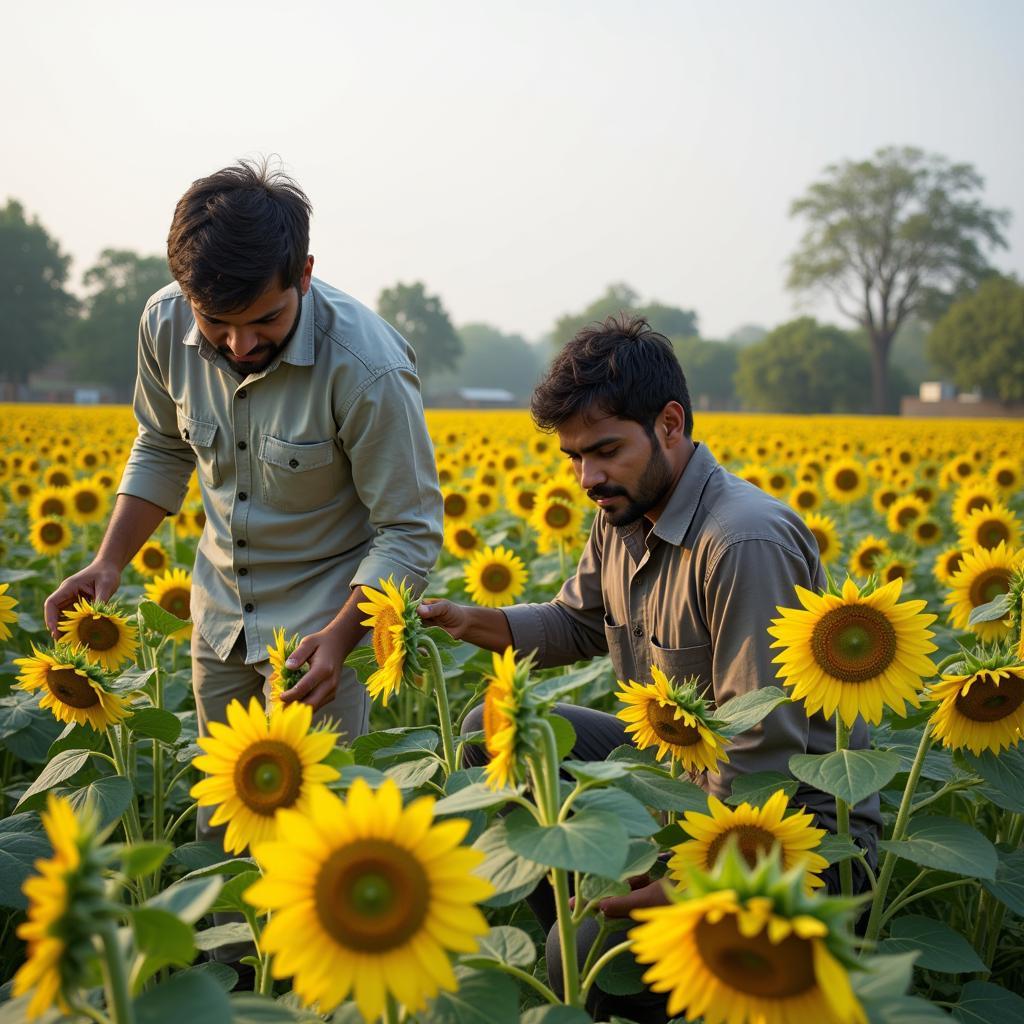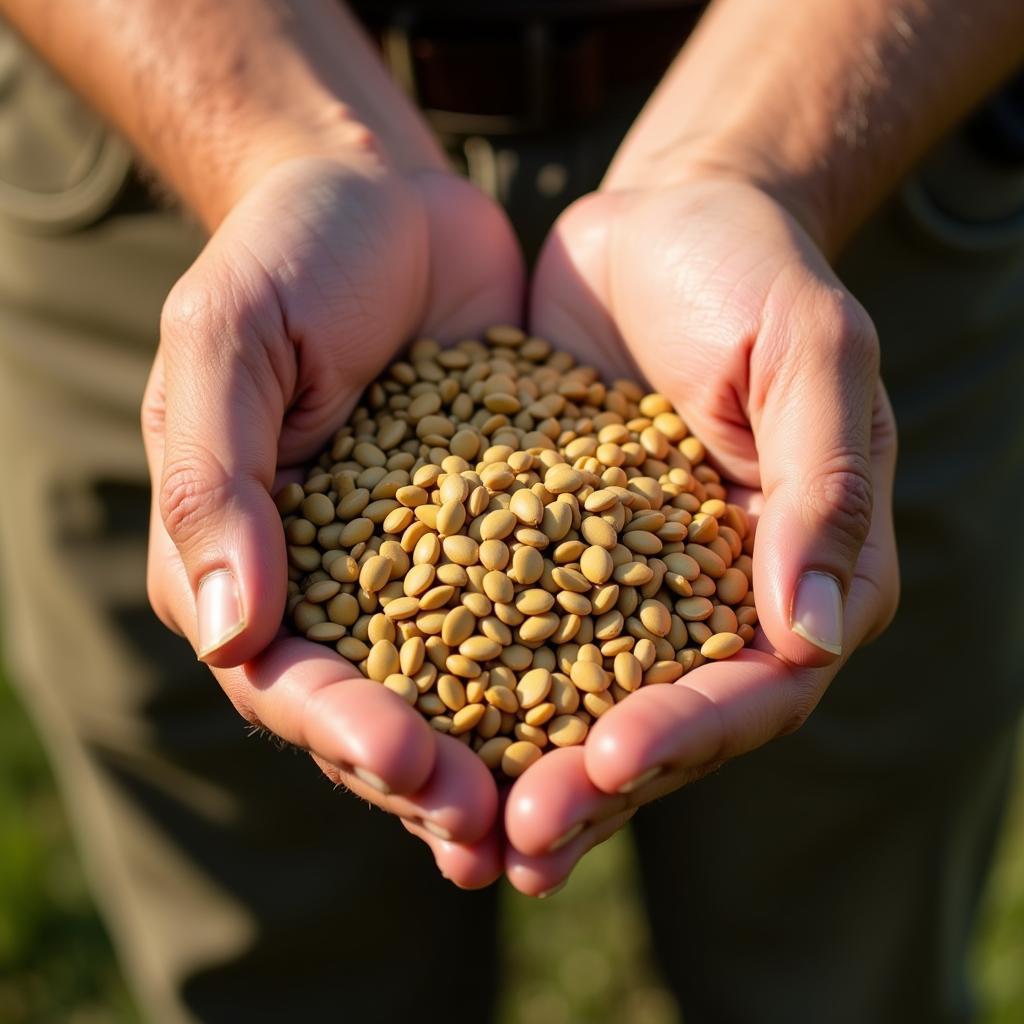The sunflower, a vibrant symbol of summer, plays a surprisingly significant role in Pakistan’s agricultural landscape. While not as widely cultivated as staples like wheat or rice, its area and production contribute significantly to the country’s edible oil production and agricultural economy.
Unveiling the Significance of Sunflower Cultivation
Pakistan, with its diverse climate and fertile lands, faces an ongoing challenge: bridging the gap between edible oil demand and domestic production. This is where the sunflower steps in.  Sunflower Field in Pakistan This versatile crop thrives in various regions of the country, offering a valuable domestic source of edible oil and contributing to Pakistan’s food security.
Sunflower Field in Pakistan This versatile crop thrives in various regions of the country, offering a valuable domestic source of edible oil and contributing to Pakistan’s food security.
Exploring Sunflower Growing Areas in Pakistan
Punjab, the breadbasket of Pakistan, takes the lead in sunflower production. Its fertile plains and favorable climatic conditions make it ideal for cultivating this sun-loving crop. Sindh follows closely, with significant sunflower cultivation in its irrigated regions.  Sunflower Farmers in Pakistan Khyber Pakhtunkhwa and Balochistan also contribute to the overall production, albeit on a smaller scale.
Sunflower Farmers in Pakistan Khyber Pakhtunkhwa and Balochistan also contribute to the overall production, albeit on a smaller scale.
Delving into Sunflower Production Trends
Over the past few years, Pakistan has witnessed fluctuations in sunflower production. Factors like changing weather patterns, seed quality, and market prices influence the annual yield. However, the government and agricultural organizations are actively promoting sunflower cultivation through initiatives like providing high-yielding seed varieties and offering financial assistance to farmers.  Sunflower Harvest in Pakistan
Sunflower Harvest in Pakistan
Understanding the Challenges and Opportunities
Despite its potential, sunflower cultivation in Pakistan faces challenges. These include:
- Limited access to high-quality seeds: Ensuring farmers have access to improved seed varieties is crucial for maximizing yield.
- Pests and diseases: Sunflower crops are susceptible to various pests and diseases, requiring effective management strategies.
- Market volatility: Fluctuating market prices can impact farmers’ income and discourage cultivation.
However, alongside these challenges lie opportunities:
- Increasing demand for edible oil: Pakistan’s growing population translates to a continuous rise in edible oil demand, creating a favorable market for sunflower oil.
- Government support: The government’s focus on promoting oilseed crops presents a conducive environment for sunflower cultivation.
- Technological advancements: Modern agricultural technologies and practices can significantly enhance productivity and profitability for sunflower farmers.
Conclusion: A Bright Future for Sunflower in Pakistan
The Area And Production Of Sunflower In Pakistan demonstrate its significance in the nation’s agricultural landscape. While challenges exist, the future appears promising. By addressing the challenges and capitalizing on the opportunities, Pakistan can enhance its sunflower production, paving the way for a more self-sufficient edible oil sector and a brighter future for its farmers.